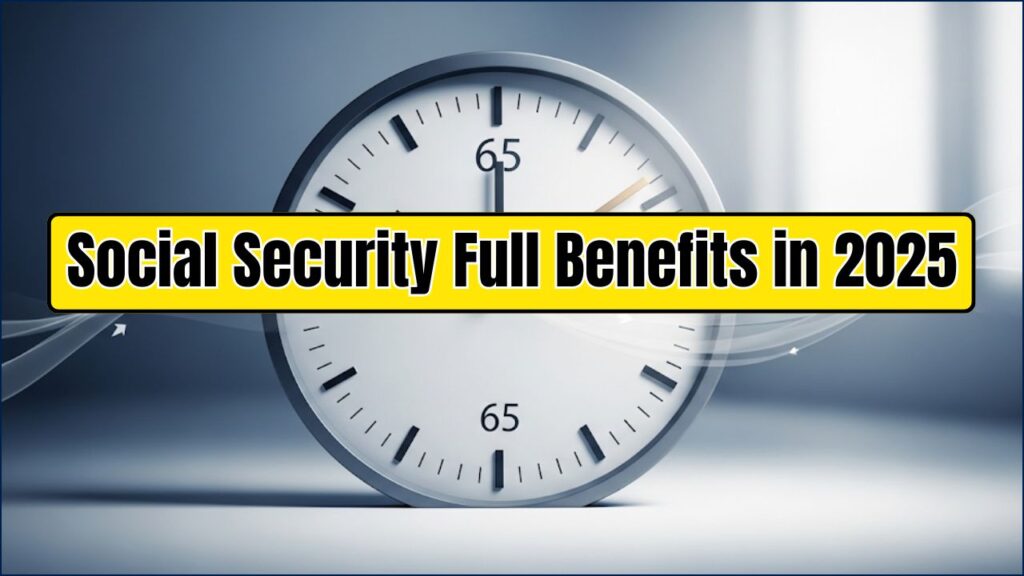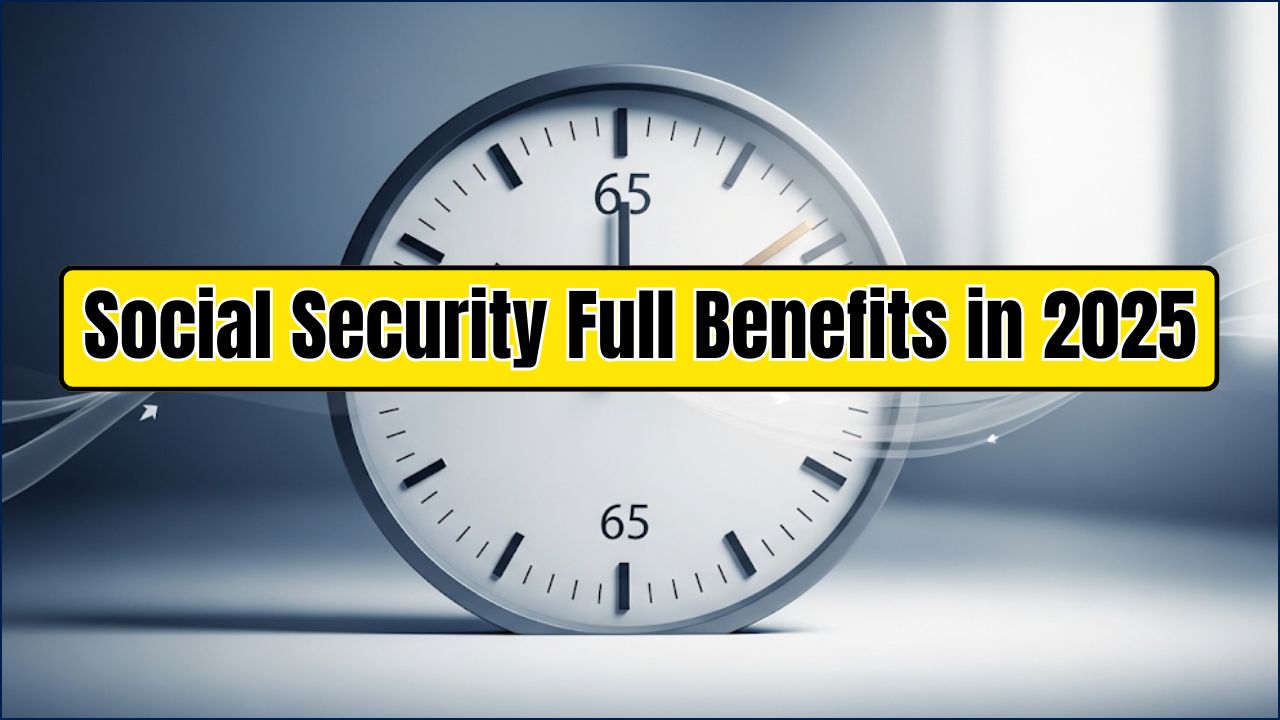Social Security Full Benefits in 2025—It’s Neither Age 65 Nor 67 is the big conversation right now. Yep—you read that right: full retirement age (FRA) isn’t a simple 65 anymore, and for some folks, it’s not even 67 yet. Think of it like this: the rules changed a while back, but now we’re finally in the years where it’s playing out in real time.

I’m here to walk you through this like your wise uncle who’s been there, done that, but with the accuracy of a seasoned financial planner. Whether you’re years from retirement or helping clients decide when to claim, you’ll get the real story—minus the government-speak.
Social Security Full Benefits in 2025
| Key Highlight | Detail |
|---|---|
| Full Retirement Age (FRA) | 66 years and 10 months for people born in 1959; 67 for those born 1960 or later |
| Early Claiming Age | As early as 62, with about a 30% permanent reduction in benefits |
| Delayed Retirement Credits | 8% extra per year for each year you delay past FRA until age 70 |
| Official Resource | Social Security Administration – Retirement Planner |
In 2025, full Social Security benefits kick in at 66 years, 10 months for people born in 1959, and 67 for those born in 1960 or later. Claiming earlier means a permanent cut; delaying until 70 brings extra monthly income. The smartest move? Know your exact FRA, run your numbers, and use official SSA tools before deciding.
What’s Going On with Social Security’s Full Retirement Age?
The Basics—What Is FRA?
Your Full Retirement Age is when you’re entitled to 100% of your Social Security benefit. For decades, that was age 65. But in 1983, Congress decided to gradually increase it to 67 to account for longer life expectancy.
In 2025, the rule is:
- Born in 1959 → FRA is 66 years, 10 months
- Born in 1960 or later → FRA is 67
Why This Shift Matters
If you don’t know your FRA, you could:
- Claim too early and lose tens of thousands over your lifetime.
- Delay benefits and miss years of income you might actually need.
- Confuse “Medicare age” (still 65) with “Social Security full benefits age.”
A Real-Life Story: Meet Diane and Joe
Diane, born October 1959, and Joe, born February 1960, both planned to retire together in 2025. They assumed their FRA was the same—67.
Turns out:
- Diane’s FRA = 66 years, 10 months → She hits it in August 2026.
- Joe’s FRA = 67 → He hits it in February 2027.
By learning this early, they adjusted their budget so Diane could start benefits a few months before Joe without locking him into a permanent reduction.
Practical Advice: Steps to Take
1. Know Your Exact FRA
Check your birth year on the SSA’s official chart.
2. Decide When to Claim
- Early (62) → About 30% less for life.
- At FRA → Full benefit.
- After FRA to 70 → 8% more per year.
3. Run the Numbers
Use SSA’s Retirement Estimator: https://www.ssa.gov/benefits/retirement/estimator.html.
Simple Benefits Calculator Example
Let’s say your FRA benefit is $2,000/month:
| Age You Claim | % of FRA Benefit | Monthly Check | Difference from FRA |
|---|---|---|---|
| 62 | 70% | $1,400 | –$600/month |
| FRA (66y10m) | 100% | $2,000 | — |
| 70 | 124% | $2,480 | +$480/month |
(Based on SSA’s 8%/year delayed credit rate)
Myth-Busting: Social Security Edition
Myth 1: You have to stop working to get Social Security.
Truth: You can work and claim, but if you’re under FRA, there’s an earnings limit before benefits are temporarily reduced.
Myth 2: Everyone’s FRA is 67 now.
Truth: Not yet—people born in 1959 still have a slightly earlier FRA.
Myth 3: Delaying past 70 gets you even more.
Truth: Nope—benefit growth stops at 70.
Pro Tips from a Professional
- Coordinate with Medicare: Sign up for Medicare at 65 even if delaying Social Security.
- Watch taxes: Social Security benefits can be taxable depending on your other income.
- Plan for survivors: Your claiming age affects the benefits your spouse may get later.
- Avoid “file and forget”: Review your benefit statements yearly for errors.
2025 Social Security Options at a Glance
| Age You Claim | Benefit Change | Who This Affects | Key Consideration |
| 62 | Permanently reduced benefits. (Up to 30% less than FRA) | Anyone born in 1960 or later. | You get a smaller monthly check for the rest of your life. |
| 67 | 100% of your benefits. | Anyone born in 1960 or later. | This is your baseline for a full, unreduced benefit. |
| 70 | Permanently increased benefits. (Up to 24% more than FRA) | Anyone who can wait to claim. | You get the maximum monthly check possible. |
3 Common Social Security Mistakes to Avoid
- Mistake #1: Thinking the FRA is 65 for everyone. This is perhaps the most common misconception. The age 65 cutoff ended decades ago, and believing it applies to you could lead to a significant benefits reduction if you claim too early.
- Mistake #2: Not checking your earnings record. Errors in your earnings history with the SSA can lead to a lower benefit calculation. You can and should check your records periodically to ensure accuracy.
- Mistake #3: Filing at age 62 without a plan. While you can claim benefits as early as 62, doing so results in a substantial, permanent reduction. This decision should be part of a thoughtful retirement income strategy, not a default choice.
Data & Stats (from SSA.gov)
- FRA increase is law (Social Security Amendments of 1983).
- Early retirement reduction = up to ~30% at age 62.
- Delayed credits = +8% per year past FRA until 70.
FAQs
Q: Does FRA affect Medicare?
A: No—Medicare eligibility is still 65.
Q: If I keep working past FRA, do my benefits increase?
A: Yes, if your new earnings replace lower-earning years in your 35-year average.
Q: What’s the earnings limit before FRA?
A: In 2025, if you’re under FRA, you can earn $22,320/year before temporary reductions kick in.














